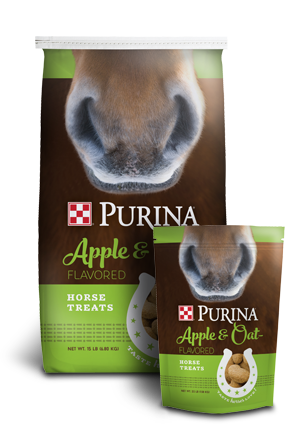
Feeding Young Growing Horses to Reduce the Risk of DOD

Developmental Orthopedic Disease (DOD) is a common concern in young horses, referring to a group of conditions where skeletal growth occurs abnormally. DOD development is multifactorial, influenced by genetics, management, and nutrition. While nutritional mismanagement is a key contributor, proper nutrition can help support horses with abnormal growth or manage the risk of DOD.
Young Horse Feeding Basics
Feeding young horses requires careful planning, starting before birth. Ensuring the mare’s optimal nutrition before, during, and after pregnancy is essential for fetal development and milk quality during lactation. Programs can be designed to support rapid vs. moderate vs. slow rates, however these decisions should be made early with few changes occurring during the early growth period. Foals should begin consuming concentrates at around 28 days old, a good rule of thumb is 1 lb of feed per month of age per day. Feeding with progressive and consistent increases in concentrate amount will allow for the desired steady growth curves associated with optimal skeletal development. Erratic changes in which an improper concentrate is fed, free-choice access is offered, or sudden changes to concentrate amount occur, can result in the unpredictable growth curves that are the hallmarks of DOD development.
Feeding Horses with Developmental Abnormalities
Even with optimal nutrition, and more often in cases with sub optimal feeding practices, the development of DOD is a common occurrence. It’s a misconception that excess calories or protein alone cause DOD. Instead, imbalances in these and other nutrients have been linked to abnormal growth. Upon diagnosis, energy content should be evaluated, and adjustments made to avoid rapid growth. The goal should be to reduce the energy consumption without restricting amino acid, vitamin, and mineral intake necessary for optimal growth. Ration balancing feeds are a good tool to provide nutrients when calories are provided by forage alone. If forage quality is poor or complete control of the diet is necessary, complete feed with forage built-in can be used. In addition to energy and protein, other nutrients exist in a delicate balance and should be maintained at certain ratios to ensure optimal utilization. Calcium and phosphorus are classic examples and should remain balanced to a ratio of no less than 1:1 (2:1 being optimal). Similarly, copper and zinc must be maintained in a critical balance, around 4:1 for the complete diet.
In conclusion, following these feeding guidelines can help reduce the risk of DOD in young horses:
-
Focus on proper nutrition during pregnancy.
-
Feed diets designed for growing horses.
-
Evaluate the entire diet, including forage quality.
-
Balance energy and protein intake.
-
Ensure optimal mineral ratios.
-
Use ration balancing feeds when energy needs are met by forage.
-
Utilize a complete feed if forage quality is poor or otherwise necessary.
-
Reevaluate the diet as the horse’s needs change during growth and training.
By adhering to these guidelines, the risk of developmental musculoskeletal issues can be minimized, promoting healthy growth and development. For additional information and nutritional support, request a consult with a Purina Ph.D. equine nutritionist.




